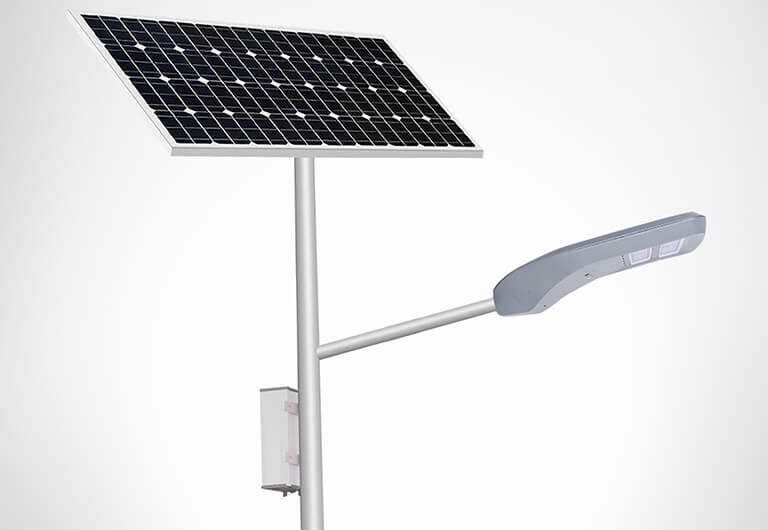The Philippines is one of the 194 states that have committed to the Paris accord. Our country aims to accelerate our renewable energy portfolio mix by 33% and diminish our greenhouse gas emission (GHG) by 70% by 2030.
Solar energy is one of the clean energy resources we are focusing on. The abundance of annual sunlight we receive makes it ideal to develop solar rooftop systems for our homes, commercial and residential establishments.
Other solar-powered products such as solar street lights also benefit local communities in the Philippines. They are undeniably energy-efficient, eco-friendly, and cost-effective. For local government units and contractors sourcing the best solar street lights in the Philippines, it is important to understand the technicalities and familiarize yourselves with the products you deal with.
The current market, without any international standards, is full of falsely advertised solar energy products, i.e., unscrupulous factories and sellers make fake claims with overrated technical product specifications. We end up with unsuccessful projects that waste people’s money. Ultimately, myths on solar street lights have cast a dark shadow on the benefit of solar street lights in the Philippines and other developing countries.
Top 7 factors to consider when planning to buy solar street lights in the Philippines.
Fake Parameters
When selecting solar street lights, take the indicated specifications with a grain of salt. There are many false advertisers in the market. Many producers and sellers provide bloated technical specifications of their products. A product might be advertised as having a 100Ah battery but upon inspection is just a 10Ah battery.
Do your due diligence. Ask for internationally recognized product certifications and check the validity of the report and reputation of the certifying inspection institutions.
Buying Cheap Products
When buying products, most people are tempted to purchase the cheapest possible option. Adopting the strategy would be a huge and costly mistake. We often fall victim to the “cheap solar street light trap”. Most solar street lights in the Philippines are produced with cheap and low-quality materials that most probably have a very short life cycle. On the other hand, a relatively more expensive piece of equipment would probably be built with good quality, functional and durable components. Purchasing good quality products ensure its dependability in harsh weather conditions and long-term reliability.
Excellent quality products may have a higher upfront cost but it would come out cheaper when amortized during its entire product life cycle. As the saying goes…You Get What You Pay For.
Environmental Consideration
Another important factor to consider when buying solar lights is the environmental conditions of the installation area. Most solar lights use LiFePO4 lithium or a Ternary li-ion lithium battery. Both of them have different advantages and disadvantages. One might be better in certain conditions as compared to the other. Different batteries have different characteristics such as charge and discharge temperature tolerances.
Choosing the right battery can eliminate overheating, degradation and fire situations. As the Philippines experience extreme heat conditions, we recommended LifePo4 batteries for their safety, tolerance and sustained functionality under high heat exposures.
Battery Capacity
With “clever” advertisements, the ampere-hour (Ah) of the battery is made to appear larger than they are. Upon proper calculation, i.e., watt-hour (Wh) =Ah*V, the Ah of the batteries tends to be far bigger than the Wh, which is the actual capacity of the batteries.
Different types of batteries have different capacities. They require a different amount of voltage (V) to generate the same amount of Wh. For example, to achieve the same available capacity, the ternary li-ion battery parameters must be higher than that of the LiFePO4 lithium battery.
Many factories use the cheaper type of battery to save money, resulting in a shorter life span and a faster charge-discharge rate. For good performance, you need to invest in products that are equipped with LiFePO4 lithium batteries with excellent battery cells.
Solar Panels Types
There are 4 different types of solar panels. Solar street lights generally use either the monocrystalline or the polycrystalline silicon solar panel. The polycrystalline panel efficiency is 12-16% while the monocrystalline silicon solar panel is at 17%-22%. The higher the efficiency, the higher the energy output is. Although monocrystalline panels might cost you more, their energy output and better tolerance to heat are superior to other solar panel technologies.
Kind of Sensors
Sensors are crucial components of a solar lighting system. There are two main types of sensors that can be installed in solar light panels. A microwave sensor or an infrared sensor. The microwave sensors are more sensitive to motion and could detect movement at longer distances compared to an infrared sensor. A microwave sensor has a sensing distance of 8-15m that detects the motion of humans and cars.
LED Light Sources
At first glance, it seems logical to choose the light source with the higher wattage. However, the right option is to go with the light source with better lumens and the right angle. A smaller area and the wrong curve of the lens creates vertigo light effect and make it less safe to drive. The safer and more practical option would be to go for the light source, which has a lower wattage but the right attenuation rate of light.
We encourage local government units and contractors to reach out to us at +639176310032 for a free consultation. Let us help you plan your next successful Solar Street Light project.







Comment (1)
Any brand/model you can recommend for a pay parking lot? Thanks.